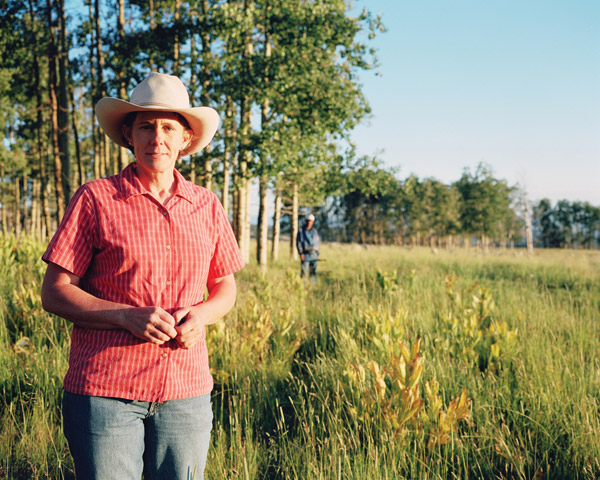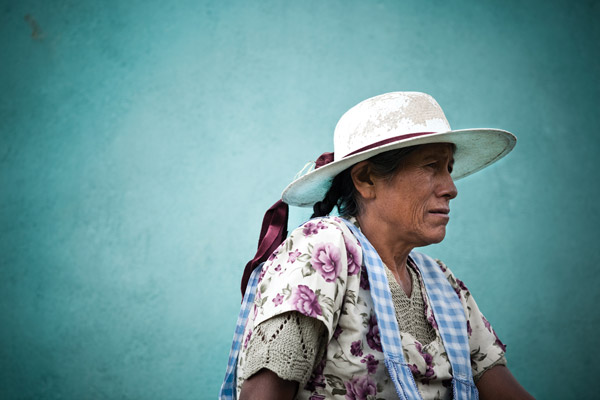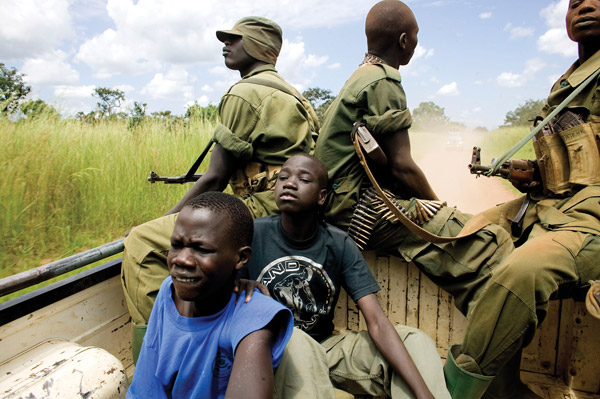I thought there must be a prior remedy so one can defy it.I wonder how people working so far for.
Making A Difference: Working With Nonprofit Organizations

© Michelle Bogre
In this column, we talk about marketing and business techniques used to promote a project or cause, how to be an activist and still pay the rent, and get advice from photographers who look to give back to their community. Knowing how busy they are with their work and travel, we want to thank the four photographers for their valuable contributions to this column: Michelle Bogre, Heather McClintock, Tim Ryan, and Stephen Shames. You will find their Internet links at the end of this article. Let’s start with some background information on each one.
Michelle Bogre is a documentary photographer, author, educator, and copyright lawyer. Although there was a hiatus in her own documentary career during the 14 years she was the Chair of the Photography department at Parsons The New School for Design, since resigning that Chair position in 2008 to return to a faculty position she wrote a book, Photography as Activism, that explores the history and current state of activist photography. Bogre also started a new photographic activist project of her own, “Family Farms in America.” Her focus is to raise awareness of the truth and reality of family farming in America and to educate consumers about the value of farms and the reasons we should support them. When not writing or photographing, Bogre is speaking out and trying to educate photo and design students about copyright issues.

© Michelle Bogre
Heather McClintock received her B.A. in Photography from New England College and relocated to New York City to pursue her personal journey. She worked at commercial photography studios but always felt the pull of something more. That “more” was Uganda, and after three trips and more than 10 months in the country, her first monograph, The Innocent: Casualties of the Civil War in Northern Uganda, was published in June of 2010 by Schilt Publishing. McClintock’s photographs are included in the permanent collection of the National Gallery of Art, Washington, DC, the Santa Barbara Museum of Art, and are on permanent display at the United Nations. Her work was selected to be a part of the Child Soldiers book, published by powerHouse, which was subsequently exhibited as Children of War: Broken Childhood at the United Nations.
Photographer Tim Ryan created “Project Exposure” from his own first-hand experiences working internationally for nonprofit organizations. Project Exposure is a nonprofit organization dedicated to funding and promoting photography projects around the globe through grantmaking and public outreach initiatives. Its aim is to create an opportunity for nonprofits and photographers from the same community to collaborate on projects worldwide. To accomplish this they cover travel fees and expenses for photographers willing to work pro bono for US-based nonprofits operating outside the US. By using the power of still photographs, the goal is to raise awareness of the work of the nonprofit, the talents of the photographer, and the mission of Project Exposure, as well as give rise to a self-sustaining collaboration between the photographer and the nonprofit.

© Heather McClintock
Stephen Shames, executive director, L.E.A.D Uganda, creates award-winning photo essays on social issues for foundations, advocacy organizations, the media, and museums and has testified about child poverty to the US Senate. Shames is the author of seven monographs: Outside the Dream, Pursuing the Dream, The Black Panthers (Aperture), Bronx Boys (FotoEvidence), Facing Race (Moravian College), Transforming Lives (Star Bright Books), and Free to Grow (Columbia University). He was named a Purpose Prize Fellow in 2010 for his work with L.E.A.D Uganda. Shames founded L.E.A.D Uganda to help transform forgotten children into leaders. They locate the brightest children living on the edges of society—AIDS orphans, former child soldiers, abducted girls, and child laborers—and give them a family so they can heal. The organization educates them at the best schools and mentors them so they gain the entrepreneurial skills they need to achieve their dreams and help their communities. “We serve them so they can serve the world.”
Shutterbug: Do you think a photographer’s commitment to issues for charitable organizations, nonprofits, or Non-Government Organizations (NGOs) can benefit or promote their work? How can it be blended into earning a living?
Tim Ryan: I think that there is the potential for business expansion, but I wouldn’t suggest doing it for that reason. This is work that has to come from within. If your motivation is strictly based on how you will benefit from the work, then you’re in it for all the wrong reasons. That said, I have been fortunate to convert pro bono clients into paying clients but only because it was the natural progression of the organization and not anything that was premeditated.
Project Exposure, on the other hand, is all about creating an opportunity for photographers to do the work they’re passionate about in conjunction with NGOs that need their talents. The goal is that the “seed” we plant by funding the first pro bono assignment will grow into a long-term, mutually beneficial collaboration that compensates the photographer and benefits the NGO.

© Heather McClintock
Michelle Bogre: I think that it is no different than working in any other photographic genre. The more images produced and published, the more work that you will get. Potential clients or editors are always looking for new work and fresh vision and they look at a lot of imagery in the course of a normal day. Other potential clients will see any work that a photographer does with an NGO or nonprofit organization that gets good exposure.
It also leads to new contacts that in turn may become sources or resources for jobs or opportunities. It’s just networking. And given that there are no second acts in life, working in a way to influence change or to raise awareness about social issues is just a good thing to do, as clichéd as this sounds. Ask yourself—why did you become a photographer? Why do you pick up your camera? What do you want to do with it?
Heather McClintock: I have never looked at Uganda and my work there as a business model. The question I always ask myself is—how can my work make a difference? I do feel entrusted with the lives that are before my camera, and my commitment is to them. In many cases, access is everything. An NGO is your best and at times only partner in a rapidly unfolding disaster or crisis; and that relationship is completely symbiotic. My initial images are sent out to their key donors to start the first layer of funding and that is my reason for being there. I have never considered my promotion, the expansion, or the benefit to my business at all. I am simply there to serve. Certainly donors have purchased my prints afterward, but that is simply the residual effect of my intent and what I have put in motion by being there in the first place.

© Tim Ryan Pictures, Inc.
Stephen Shames: People who want to photograph issues have to work harder. Photojournalists have to do more than just work for newspapers and magazines (unless you can get a contract or a full-time job). Photographers turn long-term projects into books. They sell prints to collectors. They produce multimedia, and video. Then they also have to find a way to get their photos to an audience. I often joke, we not only have to drive the car, we have to build the road.
One good piece of news, nonprofit photography has become a viable business in the past decade because nonprofits, NGOs, and the foundations that support them need to get out in the world and show people what they do. Some nonprofits and NGOs have become big businesses. Foundations that fund much of the work NGOs do want to show the good they are doing. They need photographers and videographers to tell their story.
Photographers can work directly for them and be hired by them to do photos for them; or they can partner with them. I have partnered with a number of nonprofits and foundations to do large stories on issues. The secret is to identify which foundation or nonprofit wants your issue told. Then you have to call them, go to endless meetings, and write a good proposal. Show them how your work promotes their message and their goals. A photographer who can present a good marketing plan will find an interested audience.
SB: What tools have you used to promote your objectives or create a “call to action?” Is it websites? Corporate funding? Personal contacts? Blogs? Books? Articles?
Tim Ryan: In promoting “Project Exposure,” as well as the work that I do, all of the above have been and will be used at one time or another. Additionally, I was personally involved in a solo, two-month gallery show that featured images I shot for an NGO. The idea behind that exhibit was to raise awareness of the organization’s mission among the general public in Denver. Images from that show were also part of the group show Water: Our Thirsty World at the Annenberg Space for Photography in Los Angeles.
This past summer Project Exposure collaborated with another locally-based, internationally-focused NGO on the Smithsonian’s Design for the Other 90% exhibit in Denver. We selected a handful of Colorado-based photographers who work internationally on issues that were highlighted in the exhibit. They each gave a presentation of their work as well as exhibited their imagery during the three-month run of the show. Also, there is a public outreach program featuring the work of a photographer and the nonprofit which will be funded by Project Exposure via a Kickstarter campaign as well as other funding and sponsorships which will be presented on our website, www.projectexposure.org.

© Tim Ryan Pictures, Inc.
Michelle Bogre: My objectives are twofold: one is personal, and that is my own new activist photography project on “Family Farms.” I am using my personal contacts to find farmers and I will be creating an interactive website to promote an interest in supporting local farming. The website will feature my photographs, video portraits of farmers, and a plethora of relevant information and links to encourage people to investigate what’s happening in their local communities.
On a more mega level, as an educator I want to inspire and encourage students and young photographers to want to influence and affect change to educate the public at large about what needs to be changed. To that end, I wrote a book, Photography as Activism, both as a call to action and as homage to the amazing work done by activist photographers in the past and being done currently. I also developed a class at Parsons, also titled “Photography as Activism,” to encourage photography students to work in an activist mode. This upcoming semester we will be partnering with a local NGO.
Stephen Shames: We use the power of photography to engage people, the media (magazines, newspapers, television), books, and our website. Articles have appeared on CNN, NY Times, People Magazine, NY Daily News, UNICEF Radio, Philadelphia Inquirer. Photos have appeared in Time, Forbes, NY Times Magazine, and a young adult’s photo book, Transforming Lives, included stories and photos of our students. We send out a monthly newsletter and have a Facebook group. The Huffington Post Impact blog asked me to write about Africa. Our website includes videos and photographs and our students’ stories.
Videos appear on a weekly web TV show directed and shot by two professional video people from Ascension Entertainment. We are small, so we use what we have: myself, our staff, our students, and a network of friends and supporters. I am a photographer and journalist, so we utilize photographs and stories. We bring one or two of our students here every year to speak at churches and schools and do media interviews. Our students, who are products of our program’s unique approach, are our best assets. People are blown away by their confidence, intelligence, and passion to serve Africa.
Our staff writes articles for our newsletter and meets with potential donors. My girlfriend, Andrea, a professional publicist, helps with marketing. Board members like Errol Daniels actively recruit donors. We have a number of churches that work closely with us. The largest is Forefront Church in New York City. Their members help spread the word. “Word of mouth” helps very enthusiastic supporters who tell their friends.

© 2006, Stephen Shames
SB: Blunt question: what recommendations would you make to a photographer looking to make a difference, be a photography activist, and still pay the rent?
Stephen Shames: If you believe in something, then do it. I believe that if you do excellent photographs about anything, you will be able to make money with them. If photos are good enough, they are art, and art is lasting. It sometimes takes time. My photographs of the Black Panthers took 40 years to become a book and get into the art world, but it was worth it. They are a historical group of photographs that will live on. So follow your heart. You might have to do commercial work or something to continue photographing your passion, but do it. If you produce a great body of work, it will eventually pay off.
Heather McClintock: It’s the first question I’m asked by students or photographers wanting something more fulfilling and meaningful in their lives. I can see it in their eyes…how do I do something with meaning beyond myself, and make a living from doing it? It’s a partnership, a labor of love, so without a doubt you must find in your heart what you are passionate about first and move forward from there. The blunt answer is that you will not make a living from being a “photography activist.” The most difficult question is…how could you ever profit from the suffering of others?
Michelle Bogre: Blunt answer: keep your overhead low and your passion high. Understand that funding today is multi-platform. Almost all of the photographers I have interviewed have funded projects out of savings. That work leads to publications, more work and/or grants and awards, which continued to fund their projects. Activist photographers today have to shift the paradigm and understand that funding comes from a variety of sources: grants, awards, crowdfunding websites such as Emphas.is, and even social media.

© 2006, Stephen Shames
SB: What is your best piece of advice for photographers looking to work with NGOs or nonprofits?
Stephen Shames: Having great work in your portfolio is taken for granted. Nonprofits want to know that you understand their issues and what they do. If you go into your interview knowing these things you have a better chance of getting the job. At the very least, look at their website and get some of their publications. Read news articles about the NGO and their issues.
NGO and nonprofit photography is not just about making a good news photo or taking a beautiful photograph. It is about communicating issues, which can be complex, to the public. In addition to having knowledge of the issues, nonprofits want to know that the photographer understands the culture of their organization. Some organizations, UNICEF is an example, do not publish faces of rape victims or former child soldiers. You need to know about the country and the people being photographed. Photographing in a refugee camp or in a Muslim country (for a Westerner) requires awareness of culture mores that may be very different. The NGO needs to know that you will not jeopardize their relationship with the people they are helping.
Michelle Bogre: The most important thing to do is to research the organization to find out what their focus is and how they work with photographs and photographers. You want to match an NGO’s aesthetic and approach to your own work and how willing you are to adapt your methodologies to the NGO. NGOs want to work with photographers who understand that they represent the NGO rather than photographers who want to use the NGO for their own ends.
Tim Ryan: Take your time to find a suitable match for your style and passion. Once you identify interests and your passion, then look at your time commitment and location—is there a local group? Or is your interest going to take you globally? I always like to recommend starting locally because it has that crossover benefit of helping in your local market and helping the organization. You don’t have to go halfway around the world to make a difference. In my case, I work with a Colorado-based NGO that works internationally and that works well for me.
When you find the organization, get to know them, its people, mission, and goals, and really try to bring all that into what you do for them. When you get to that level, you’ll become a real member of the team and can help them in ways that you could never do for a commercial client.
Contributors’ Websites
We encourage you to visit these websites to learn more:
Michelle Bogre
• www.michellebogre.com
• www.facebook.com/pages/Photography-as-Activism/227601690637983
Heather McClintock
• www.heathermcclintock.com
• www.africanyouthinitiative.org
Tim Ryan
• www.timryanpictures.com
• www.projectexposure.org
Stephen Shames
• www.stephenshames.com
• www.leaduganda.org
• www.leaduganda.org/resources/downloads/
- Log in or register to post comments


I think I saw your article is very lucky. Continue, I will pay attention to your GOOD bags.

I haven't realized that working for a NGO might put you in such dangerous situations, but I wouldn't back out just for this. Being able to make a difference for these children while providing them with education is one of those exciting opportunities well worth the effort.

The photos could express a lot of feelings. last year I was to Colorado and I had the opportunity to take amazing photos and to taste the unexpected delight of Colorado`s food.

Non government organizations (NGOs) and other voluntary organizations are working quite significantly for the marginalized sections of the society. By looking after the deprived, helpless and distressed people NGOs contribute for the development of the society. These organizations act as the media to raise issues and concerns of people and convey them to the government and policy makers.Non government organizations also helps look for missing child and give them shelter and provide them with their basic needs.

The idea behind this article is excellent, and for me the first item ("Create your own damn content !")
is the real gem here : most of the people spend their entire lives only consuming what is created by others, and creating nothing themselves—or never sharing what they create, which is better than not creating at all, though not the best they could do.
http://www.obatkuatmantap.com

I started my career out of college working for a non-profit organization involved with the arts. Yes, after graduation, I took myself and my thousands of dollars of student loan debt and walked away, at least temporarily, from the career my education and certification would have otherwise directed me: teaching. I wasn’t exactly clued into personal finance at the time, so I made some mistakes with my money and my life decisions.
iknowseo

Over the past years, a lot photographers and their passion has helped non-profit organizations over the world achieve their missions. I myself a photographer and love having chance to work for a non-profit organization.
http://www.ridethehothand.com/

While reading I have feel that this blog is really have all those quality. Keep sharing such excellent post like this in future too. Thanks for posting this.
web design jakarta

Turns cool content here is very useful article, thank you admin ...
also do not forget to visit my website to simple "http://revealbabygender.com/".
Thank you Previous ...

Her information is very nice and helpful at all, a visit behind ya buddy ..
"http://www.siraunews.com/".

Coolest even though the article friend, best regards blogwalking friend http://apa-nyari.blogspot.com

I would like to appreciate your hard work you did write this post, Thanks for sharing this valuable post.
Benefits of phen375

I would like to appreciate your hard work you did write this post, Thanks for sharing this valuable post. cheap adjustable weights.

Over the past years, a lot photographers and their passion has helped non-profit organizations over the world achieve their missions. I myself a photographer and love having chance to work for a non-profit organization.

Over the past years, a lot photographers and their passion has helped non-profit organizations over the world achieve their missions. I myself a photographer and love having chance to work for a non-profit organization.payday loan cash advance
http://www.personalcashadvance.com/

These ingredients all work together to help create a formula that is highly successful for people who have struggled with other products. i agree with this,
http://www.actionaffiliatesgreenville.com/

I am doing a report on cameras. Your article is full of really useful information about Canon 5D Mark III and mini. I will make sure to come back to check out your posts for my next report.

















































